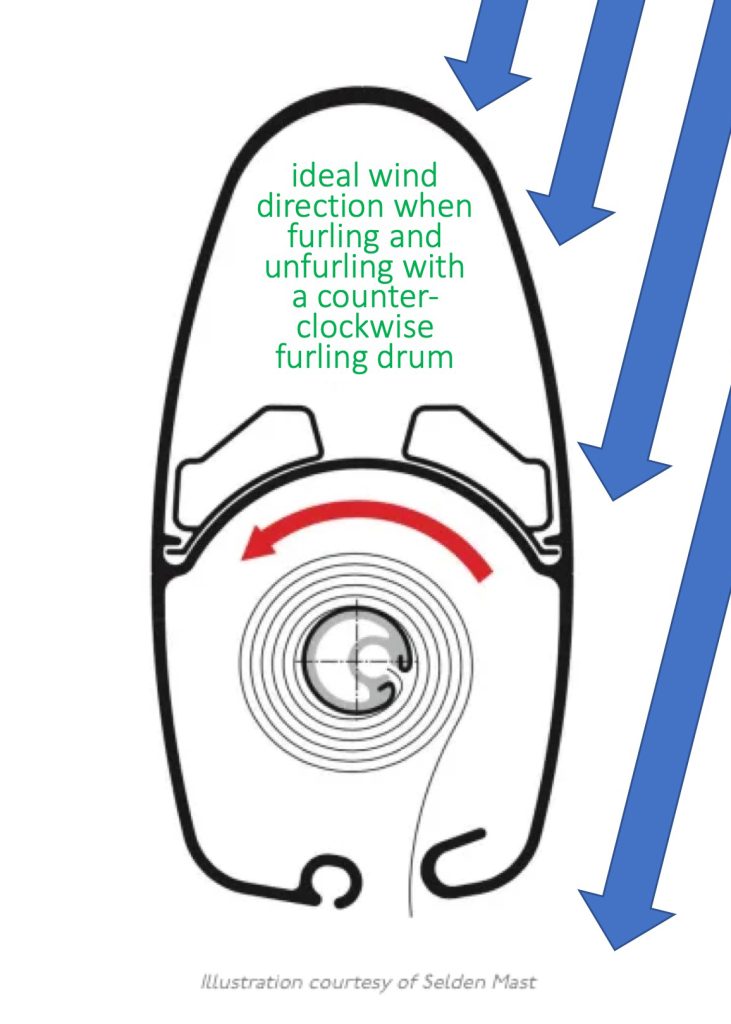In the footsteps of Don Gilzean, Craig Walker, and Tony Johnson, I’m stepping up to share some important tips as we see the need from our clubhouse vantage point. And the biggest thing we’ve noticed lately involves…furling!
So, let’s start at the beginning. Letting out your jib (OR furling main). The key to both is back-pressure or “tailing” of the furling line as you ease out the sails, but let’s go back a little further.
Unfurling the Main: You’re head to the wind, you have your boom vang released completely, you have some slack in the main, and you’re ready to start pulling on that outhaul. Right? Wrong. Most furling mains (you should always check) wrap counterclockwise in the mast (see image below), so the best angle to the wind is a few degrees to port to let the wind help the main out. The other equally important component is the backpressure/tailing mentioned before. As you are pulling on the outhaul, have someone else apply just a little tension on the inhaul. That way, the main won’t come loose in the mast and get stuck, which is never fun. Doing it this way should be easy to do by hand – no winches! Never force a stuck sail by grinding away on a winch.
Furling the Main: reverse the above, but with one difference. This time, look at the sail and put equal tension on the foot and the leech. If one of them is looser than the other, the sail will have wrinkles in it while it is rolling into the mast. Adjust the boom vang or mainsheet as needed to keep equal tension on them.
And now the Jib! What we see and hear consistently is that you have to get your main and jib out at the same time, head to wind, to sail. Not true! There’s a classic saying in sailing that goes, “Raise sails aft to forward, dowse them opposite.” Get your main up, bear away ideally to a beam reach, and then let your jib out. The wind will help, and you won’t be too overpowered – as you might be on a close haul.
The key thing to remember here, again, is tailing/back pressure on the furling fine as you pull on the working jib sheet. This may involve finding something to wrap it on, like a cleat, so that the pressure doesn’t pull it from your grasp (or burn the hands of your crew!)
Lastly…furling the Jib: often, the response to the steps of jib furling is “head to wind.” But, if you head into a good, stiff, summer breeze to furl the jib it will take the wind pressure off, but it will also turn into a flag and flog relentlessly. When the jib is flogging, we are reducing its life. Jib sheets are also flogging and can break dodger windows, are hard on blocks & rigging, and are a danger to crew. Instead, head down-wind, almost on a run. Have you ever tried to steer downwind and found yourself heading back up to keep your jib from collapsing? This is because the main is “blanketing” the jib from the wind. On this point of sail, you’ll be able to furl the jib with very little effort.
And now, reverse the tailing process – applying back pressure on the working jib sheet while pulling on the furling line!
So, can we answer the question in the title of this post? I think so. 😊
Happy sailing!


